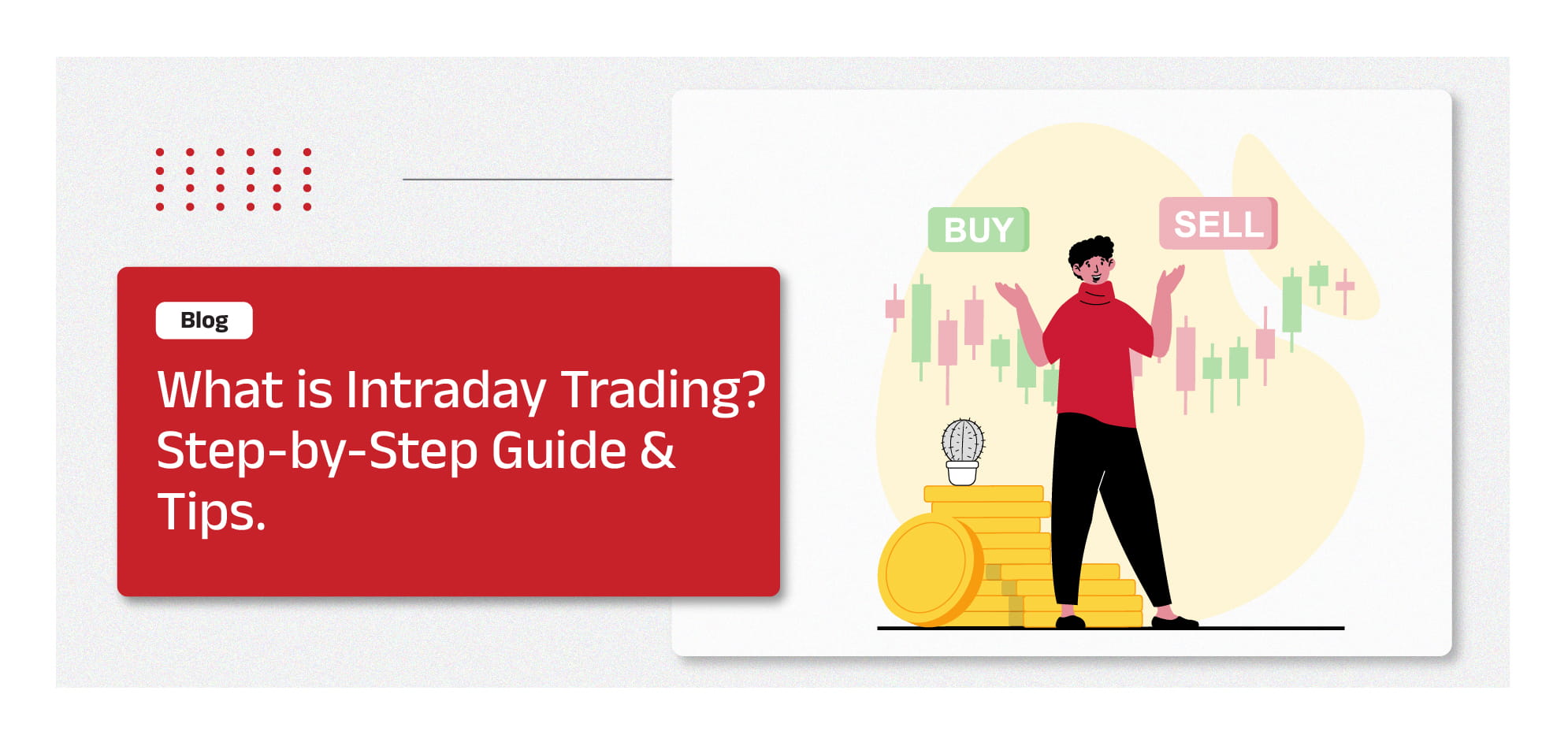-
Our Products
Our FundsFocus Funds
-
Self Care
Self-ServiceFind InformationWays To TransactPartner Solutions
-
Downloads
- Learnings
- About Us
-
More
-
Shareholders
-
Shareholders
-
Updates
-
-
SIP Calculators
- Back
-
Shareholders
Intraday Trading for Beginners: How it Works & Tips for Success

Aug 14, 2025
10 min
0 Rating
“Buy low, sell high.” Sounds easy? But what if you had to do both before the sun sets? That is the world of intraday trading! It is quick, intense, and rewards focus more than luck. Many new traders jump in without knowing what is meant by intraday trading or how it really works in the share market. If you are one of them or just curious, this blog is for you. Here, we break down everything from ‘what is intraday trading’ to how you can approach it with a smart and simple plan. By the end, you will have the knowledge to enter a trade and exit the same day with confidence. So, keep reading!
What is Intraday Trading?
Intraday trading is when you buy and sell stocks on the same day. You do not keep any shares after the market closes. You start and end your trade on the same day. This type of trading lets you make money from small price changes. You avoid risks from news or events that can happen at night. To be good at intraday trading, you need to follow the market closely. You watch news, trends, and stock charts. You also need a good trading app and live updates. Since prices move fast, you must be careful and manage your money well. Knowing what intraday trading is in the share market can help you trade with more confidence and less fear.
What is Intraday in the Share Market: Key Features
Understanding ‘what is intraday’ in the share market helps you see why it matters. Here are its key features:
Daily Time Frame: Trades start and end in one day.
Leverage Use: Brokers offer margin to amplify trades.
Quick Decisions: You must act fast on price changes
Higher Liquidity: Focus on stocks with strong trading volume.
Once you grasp what is meant by intraday trading, you appreciate the mix of tools and speed involved. It is dynamic but structured, combining research with fast hands.
What is an Intraday Trade: Step-by-Step Process
Here is how a typical intraday trade works:
Preparation: Choose a few liquid stocks. Check the news and chart patterns.
Entry Setup: Watch support, resistance levels, and volume alerts.
Risk Planning: Decide how much you can lose on the trade. Set a stop loss.
Execute: Use a market or limit order when your conditions are met.
Monitor: Track price action. Be ready to exit quickly.
Exit: Take your profit or stick to the stop loss. Do not hold overnight.
Some more key points to remember:
Pick 2 or 3 stocks and focus on them.
Use small position sizes until you build confidence.
Write down your strategy and stick to it.
What is Intraday Trading Compared to Other Styles
Here is a quick comparison showing the difference between intraday and other types of trading styles:
Style Type |
Holding Period |
Risk Level |
Key Focus |
Intraday Trading |
Minutes to hours |
Medium to high |
Speed, precision, volume |
Swing Trading |
Days to weeks |
Medium |
Trends, technicals |
Long Term Investing |
Months to years |
Low to medium |
Fundamentals, company health |
Intraday trading is fast, requiring split-second decisions. You do not watch company earnings or long-term charts. Your focus is on today’s trading. Controls matter. You rely on stop losses and position sizes. On the other hand, swing traders ride market trends over days, and investors hold weeks or months and focus on fundamentals.
Common Mistakes to Avoid
Knowing what is meant by intraday trading includes understanding common pitfalls such as:
Overtrading: Placing too many trades, hoping to get lucky.
Ignoring Risk: Skipping stop loss or risking too much capital.
Chasing the Market: Buying at peak prices because of fear of missing out.
Lacking a Plan: Trading without clear entry, exit, and size rules.
Ignoring Costs: Paying too much in brokerage and slippage.
Tips to avoid mistakes:
Do not trade just to be active.
Only risk 1 to 2 per cent of your capital per trade.
Define key price levels before acting.
Check trading costs ahead of time.
Understanding ‘what is intraday trading’ also means accepting that errors happen. The goal is to learn and refine your approach.
How to Get Started with Intraday Trading
If you are wondering how to get started with intraday trading, here is a roadmap:
Open a Demat Trading Account: Pick a reliable platform.
Practice in Demo Mode: Learn without risking real money.
Learn Basic Patterns: Study support, resistance, and volume moves.
Set Simple Rules: Example trade: enter at support, stop just below, target twice risk.
Start Small: Use limited funds until you earn consistent profits.
Track Trades: Keep a journal noting your decisions and why.
Review Regularly: Reflect on wins and losses to improve
Understanding ‘what is intraday trading’ also means accepting that errors happen. The goal is to learn and refine your approach.
Tips for Success in Intraday Trading
Here are some simple tips to help you with intraday trading:
Pick stocks that many people are trading each day
Use stop losses to save yourself from big losses
Trade only when you have a clear plan
Stay calm and follow your rules.
Watch out for charges like taxes and broker fees
Go with the market trend, not against it.
Follow the news that can affect prices during the day.
If you use these tips, you can trade with more control. Remember, intraday trading is about smart steps, not quick luck.
Wrapping Up
Now that you know what intraday trading is and how it works, you are better prepared to try it yourself. This type of trading is fast and exciting, but it also requires a smart approach. Never rush, always plan your trades, and stick to your rules. Use what you learned here to make better choices. Over time, your skills will grow and so will your confidence. Intraday trading is not about chasing profits. It is about trading with a plan and staying in control.
The information herein is meant only for general reading purposes and the views being expressed only constitute opinions and therefore cannot be considered as guidelines, recommendations or as a professional guide for the readers. The document has been prepared on the basis of publicly available information, internally developed data and other sources believed to be reliable. Recipients of this information are advised to rely on their own analysis, interpretations & investigations. Readers are also advised to seek independent professional advice in order to arrive at an informed investment decision.
Mutual Fund investments are subject to market risks, read all scheme related documents carefully.





 1800-270-7000
1800-270-7000



